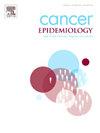Epidemiology and geographical patterns of common childhood cancers in Iran: Evidence from the National Cancer Registry
IF 2.4
3区 医学
Q3 ONCOLOGY
引用次数: 0
Abstract
Introduction
Cancer is projected to become the primary cause of death in the 21st century. Although childhood cancer is relatively rare, it remains a significant contributor to mortality among children. This study examines the geographical distribution of childhood cancer incidence in Iranian provinces using data from the National Cancer Registry between 2014 and 2018.
Materials and methods
This registry-based study analyzed data from 14,711 children under 20 diagnosed with common childhood cancers, sourced from the Iranian National Population-based Cancer Registry for the period 2014–2018. The age-standardized incidence rates (ASR) were calculated using direct standardization methods and reported per 1 million person-years. Spatial autocorrelation measures, including global and local indices such as Moran's I and Getis-Ord's G, were employed to identify high-risk and low-risk areas, assess overall spatial dependence, and pinpoint specific clusters and hotspots of incidence rates.
Results
ASR for childhood cancer in Iran was 119.56 per 1 million individuals aged 0–19 years. Boys had a higher ASR (129.98) than girls (107.68). Childhood cancer cases increased from 2765 in 2014 to 3354 in 2018, with leukemia as the most common type, followed by brain and nervous system, lymphoma, bone, and connective and soft tissue cancers. Spatial analysis identified high-risk clusters in central Iran (Isfahan, Yazd, Tehran) and low-risk clusters in the northeast (Kermanshah, West and East Azerbaijan, Kurdistan).
Conclusion
This study highlights high childhood cancer incidence in Iran, particularly among boys and in central regions, with elevated leukemia rates. These findings call for targeted prevention strategies and further research to address geographic and gender disparities and to improve care programs.
伊朗常见儿童癌症的流行病学和地理模式:来自全国癌症登记处的证据
导言预计癌症将成为 21 世纪的主要死因。虽然儿童癌症相对罕见,但仍是儿童死亡的重要原因。本研究利用 2014 年至 2018 年期间全国癌症登记处的数据,研究了伊朗各省儿童癌症发病率的地理分布情况。材料和方法这项基于登记处的研究分析了 14711 名 20 岁以下确诊为常见儿童癌症的儿童的数据,这些数据来自伊朗全国人口癌症登记处 2014 年至 2018 年期间的数据。采用直接标准化方法计算年龄标准化发病率(ASR),并报告每百万人年的发病率。研究采用了空间自相关测量方法,包括全局和局部指数,如 Moran's I 和 Getis-Ord's G,以确定高风险和低风险地区,评估总体空间依赖性,并确定发病率的特定集群和热点。男孩的发病率(129.98)高于女孩(107.68)。儿童癌症病例从2014年的2765例增加到2018年的3354例,其中白血病是最常见的类型,其次是脑和神经系统癌症、淋巴瘤、骨癌以及结缔组织和软组织癌症。空间分析确定了伊朗中部(伊斯法罕、亚兹德、德黑兰)的高风险集群和东北部(克尔曼沙阿、西阿塞拜疆和东阿塞拜疆、库尔德斯坦)的低风险集群。这些发现要求制定有针对性的预防策略,并开展进一步研究,以解决地域和性别差异问题,并改进护理计划。
本文章由计算机程序翻译,如有差异,请以英文原文为准。
求助全文
约1分钟内获得全文
求助全文
来源期刊

Cancer Epidemiology
医学-肿瘤学
CiteScore
4.50
自引率
3.80%
发文量
200
审稿时长
39 days
期刊介绍:
Cancer Epidemiology is dedicated to increasing understanding about cancer causes, prevention and control. The scope of the journal embraces all aspects of cancer epidemiology including:
• Descriptive epidemiology
• Studies of risk factors for disease initiation, development and prognosis
• Screening and early detection
• Prevention and control
• Methodological issues
The journal publishes original research articles (full length and short reports), systematic reviews and meta-analyses, editorials, commentaries and letters to the editor commenting on previously published research.
 求助内容:
求助内容: 应助结果提醒方式:
应助结果提醒方式:


